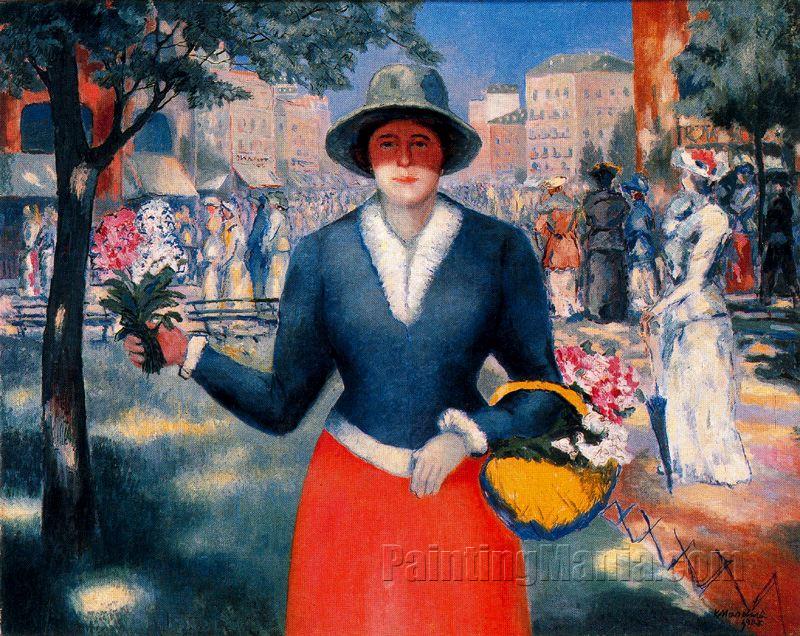Mykola Pymonenko was a Ukrainian realist painter who lived and worked in Kyiv. Pymonenko is best known for his urban and rural genre scenes of farmers, country folk, and working-class people. One of his students was Kazimir Malevich, whose early works were influenced by Pymonenko. M. Shkandriy in his ‘Avant-Garde Art in Ukraine‘ book wrote:
“[Malevich’s] awareness of the city’s art came gradually, first through pictures seen in shop windows in Kyiv, then through a meeting with the painter Mykola (Nikolai) Pymonenko, whose works made a powerful impression on him. On many of the easels he saw in Pymonenko’s studio, he informs, “stood pictures representing life in Ukraine” (Naiden and Horbachov, 25). Pymonenko taught in the Kyiv School of Drawing, to which Malevich applied and which he may have visited in 1894–96 (Naiden and Horbachov, 25). It was at this time that he decided to become a painter. Charlotte Douglas has noted that Pymonenko’s subjects, “drawn from rural life—villagers at work, haying scenes, and full-length portraits of peasants—later became Malevich’s own” (Douglas 1994, 8). One of Malevich’s most famous late paintings from 1930, The Flower Girl, recalls the eponymous work by Pymonenko and was conceived, no doubt, as a way of paying homage to the older painter.”

In 1909, Pymonenko was elected a member of the Paris International Association of Arts and Literatures. The painting ‘Hopak‘ was exhibited at the Paris Salon, and immediately was acquired by the Louvre for its collection. In view of the critics, the Ukrainian woman dancing on the canvas symbolizes the indomitable spirit of Ukraine.
Pymonenko produced over 700 genre scenes, landscapes, and portraits, many of which were reproduced as postcards. Ilya Repin called Pymonenko the ‘Living Painter of Ukraine’.